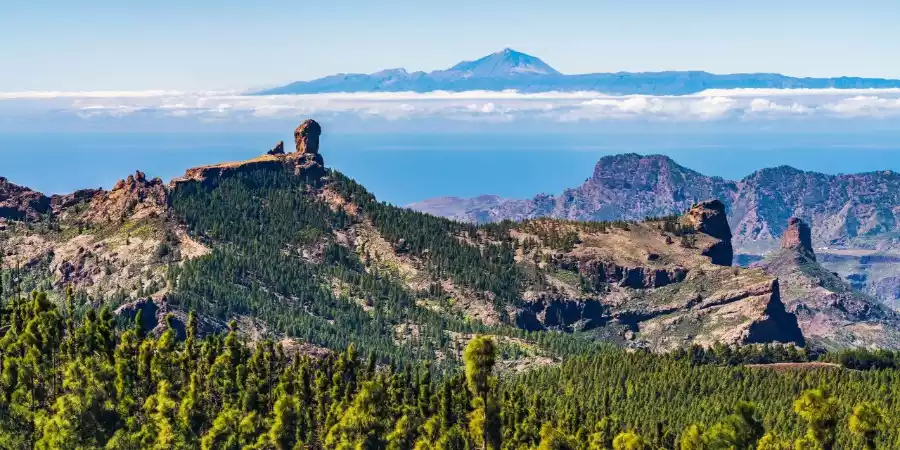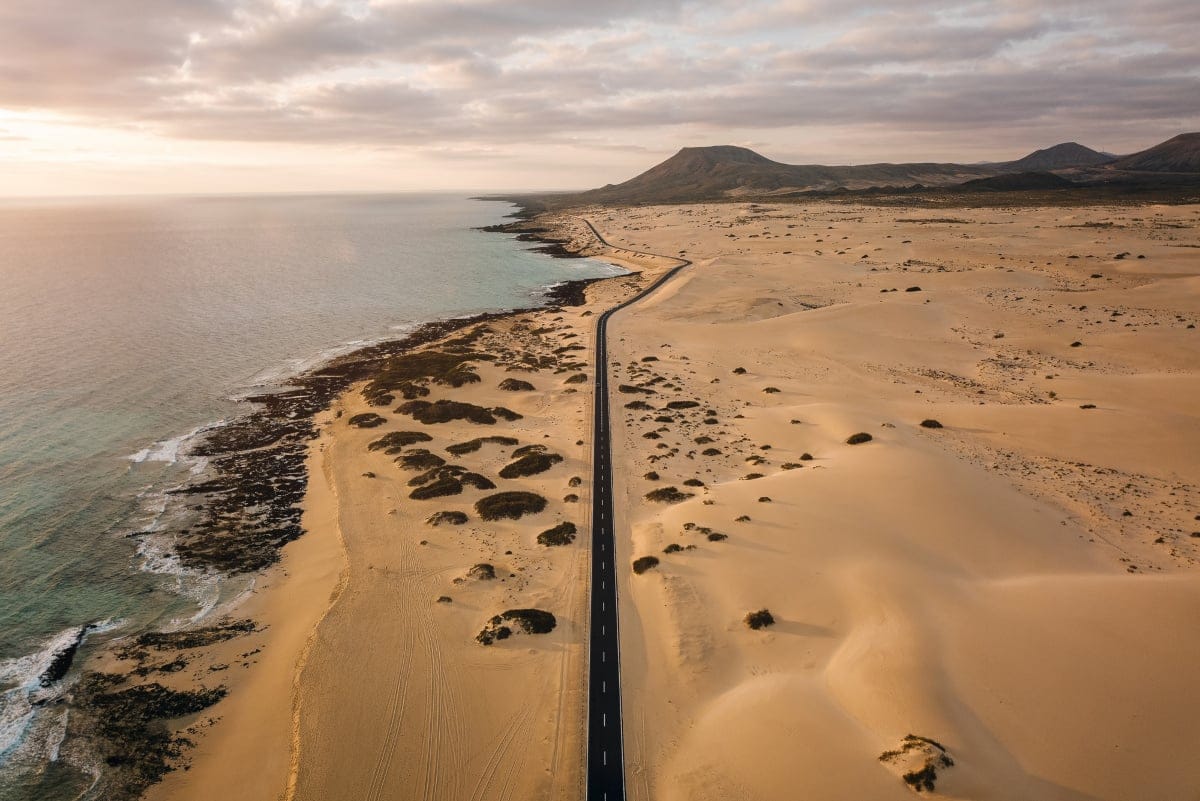Informazione: Questo blog è attualmente disponibile solo in spagnolo e inglese.
The best time to travel to the Canary Islands is from April to October, although the climate is warm throughout the year and you can enjoy its landscapes and wonderful beaches any month.
In case you didn't know, we remind you that the Canary archipelago is very close to the African continent and the Sahara Desert. A transition location between temperate and tropical climates resulting in a subtropical climate. Still, there are many variations between islands and areas, so the best definition we could make is that the Canary Islands have various microclimates.
Fuerteventura, Lanzarote, and La Graciosa are the driest islands, with the lowest rainfall and the hottest in the Canary Islands, but also the windiest. The temperature variation is very low. Tenerife, Gran Canaria, La Palma, El Hierro, and La Gomera are more humid islands, and having high peaks above 1,000 meters of altitude, there are significant climatic variations between the coast and the interior, and also between the northern and southern coasts.
The Canary Islands, due to their geographical location and subtropical climate, enjoy moderate and pleasant weather throughout the year. However, there are seasonal variations that can be described as follows:

The Canary winter coincides with its second high tourist season? I already told you that the strong season returns to the Canary Islands with the arrival of Christmas and remains during the winter months. Tourists from Northern Europe can't resist spring-like temperatures that reach over 20ºC in the middle of the European winter.
We already know that the weather during the Canary winter is very pleasant. Still, you should bring jackets and some warm clothes because, depending on the chosen island and the area within it, temperatures can drop sharply. Can you imagine enjoying a beach day in the morning and ending the day stepping on snow at El Teide? Well, you can find that in Tenerife.
Rainy days decrease and sunny hours increase, as do average temperatures. However, the wind also begins to blow more strongly as we approach summer.
Coinciding with these spring months, we have again a medium/low season, ideal for visiting the most tourist places without queues and large masses of visitors. It will also not be necessary to make reservations so far in advance, and in general, we will find good prices.
Spring in the Canary Islands is characterized by different tourism than in summer, with many families visiting with children. Spring is an excellent season for a quick getaway with your partner, to disconnect and enjoy various activities to relax.

These are the hottest months of the year, with average temperatures around 25 degrees, very little rainfall, and days with more than 12 hours of light. Ideal for enjoying the good summer weather and long tourist days until sunset.
There are also sharp temperature changes in islands with high mountainous areas such as Tenerife in the Teide National Park, La Palma in the Caldera de Taburiente, the mountainous center of Gran Canaria around the Pico de las Nieves, La Gomera in the humid forests of Garajonay, and also in the peaks of El Hierro. It is very important to take this into account when packing and to bring some warm clothes.

Another factor to consider in the Canary climate is the action of the wind. During the summer months, the wind tends to blow quite strongly on the flatter, hotter, and drier islands of the archipelago, such as Lanzarote, Fuerteventura, and La Graciosa, with July being the windiest month. That is, these islands enjoy warm temperatures and less climatic variation but suffer the force of the trade winds more. A paradise for certain water sports but not so much for those looking for sun and beach.
These months coincide with the high summer season and the arrival of national tourists from the peninsula. Prices rise, and the main tourist spots fill up with visitors. It is advisable to book flights, accommodation, and car rental well in advance (especially in July and August) and even make advance reservations for certain highly demanded activities such as the cable car ascent to El Teide in Tenerife, the excursion to Isla de Lobos in Fuerteventura, Buggy Tour in Lanzarote, Visiting the Aquarium in Gran Canaria...
Although in this summer season we find ideal weather, in September the tourist crowd decreases significantly, and as a result, we can find better prices.
During the autumn months, temperatures begin to drop slightly, rainfall occurs, especially in November and December (although still very scarce), and the days begin to shorten until the arrival of winter.
As happens in summer and practically all year round, the southern coast of all the islands is warmer and more conducive if we are looking for sunny beach days with good weather practically guaranteed. That is, this statement is valid throughout the year.
We will also notice much change in the wind's intensity in autumn. The strength of the trade winds begins to decrease in September, with October being the least windy month, ideal for those who want to enjoy perfect beach days in Lanzarote, Fuerteventura, and La Graciosa.

Another positive factor during much of the autumn is that, as in September, we continue in the medium/low season, with October and November being ideal months to find tranquility, good weather, and better prices on all the islands.
In December, as we approach the Immaculate Conception holiday and Christmas, things start to change a lot. We enter the second high season of the Canary Islands, a period of great demand from international tourists from Northern Europe. Prices begin to rise again, and the beach areas in the south of islands such as Tenerife or Gran Canaria can be fully booked due to their magnificent temperatures.